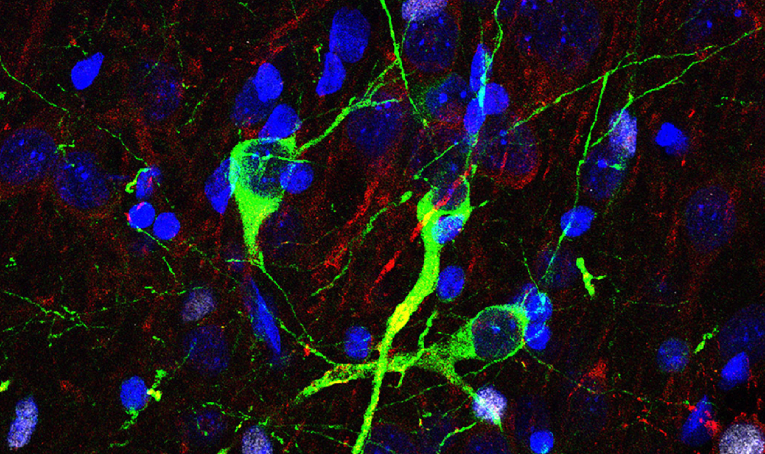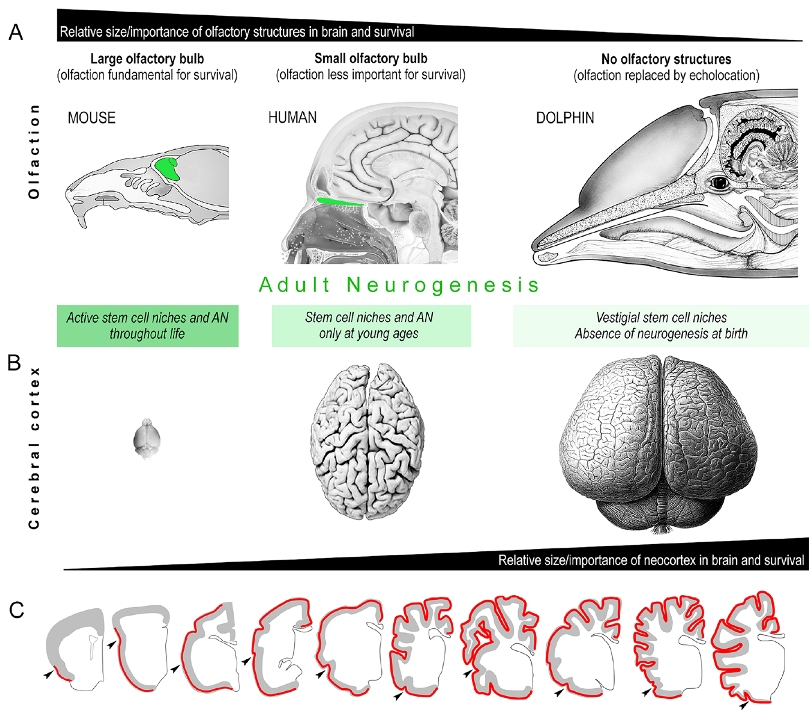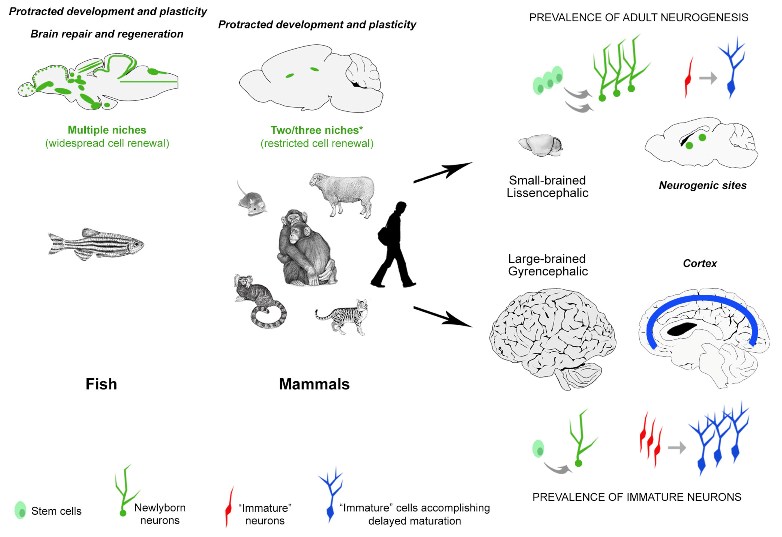
Brain Structure and Function , October 2023
Adult neurogenesis and “immature” neurons in mammals: an evolutionary trade-off in plasticity?
Luca Bonfanti 1,2 , Chiara La Rosa 1 , Marco Ghibaudi 1,2 , Chet C Sherwood 3
Research group: Adult Neurogenesis
Neuronal plasticity can vary remarkably in its form and degree across animal species. Adult neurogenesis, namely the capacity to produce new neurons from neural stem cells through adulthood, appears widespread in non-mammalian vertebrates, whereas it is reduced in mammals. A growing body of comparative studies also report variation in the occurrence and activity of neural stem cell niches between mammals, with a general trend of reduction from small-brained to large-brained species.
Conversely, recent studies have shown that large-brained mammals host large amounts of neurons expressing typical markers of neurogenesis in the absence of cell division. In layer II of the cerebral cortex, populations of prenatally generated, non-dividing neurons continue to express molecules indicative of immaturity throughout life (cortical immature neurons; cINs).
After remaining in a dormant state for a very long time, these cINs retain the potential of differentiating into mature neurons that integrate within the preexisting neural circuits. They are restricted to the paleocortex in small-brained rodents, while extending into the widely expanded neocortex of highly gyrencephalic, large-brained species.
The current hypothesis is that these populations of non-newly generated “immature” neurons might represent a reservoir of developmentally plastic cells for mammalian species that are characterized by reduced stem cell-driven adult neurogenesis. This indicates that there may be a trade-off between various forms of plasticity that coexist during brain evolution. This balance may be necessary to maintain a “reservoir of plasticity” in brain regions that have distinct roles in species-specific socioecological adaptations, such as the neocortex and olfactory structures.
Luca Bonfanti 1,2 , Chiara La Rosa 1 , Marco Ghibaudi 1,2 , Chet C Sherwood 3
1
Neuroscience Institute Cavalieri Ottolenghi, Orbassano, Italy.
luca.bonfanti@unito.it
2
Department of Veterinary Sciences, University of Turin, Largo Braccini 2, 10095, Turin, Grugliasco, Italy. luca.bonfanti@unito.it
3
Department of Anthropology and Center for the Advanced Study of Human Paleobiology, The George Washington University, Washington, DC, USA. sherwood@gwu.edu.









